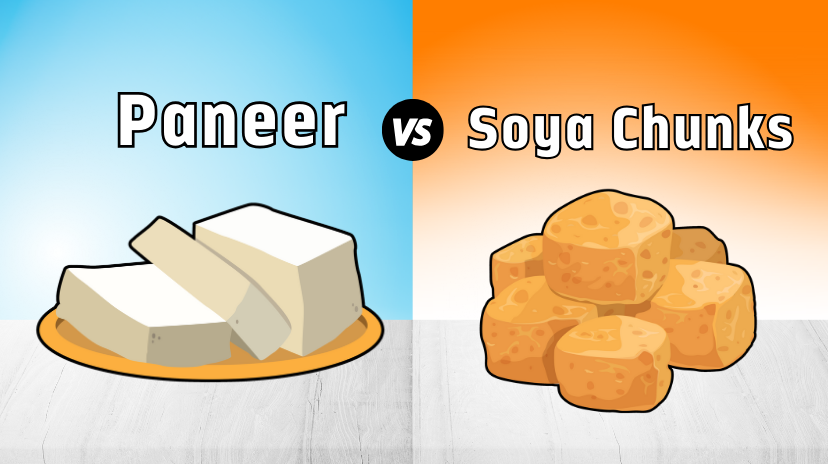
Paneer vs. Soya Chunks: Which is the Best Vegetarian Protein Source?
Share
When it comes to choosing a vegetarian protein source, paneer and soya chunks often come up as popular options. Both have their own set of benefits and can fit into various dietary goals. But how do they stack up against each other? Let's dive into the nutritional details and find out which might be the best choice for you, depending on your dietary needs and health goals.
Nutritional Comparison: Paneer vs. Soya Chunks
1. Nutritional Values per 100 Grams
> Paneer:
- Protein: 20g
- Calories: 300 kcal
- Carbohydrates: 1.2g
- Fat: 25g
> Soya Chunks:
- Protein: 52g
- Calories: 345 kcal
- Carbohydrates: 33g
- Fat: 0.5g
At first glance, 100 grams of soya chunks seem to provide more protein than paneer. However, it’s essential to consider the serving size and how these values translate to actual consumption.
Serving Sizes and Practical Considerations
Paneer:
- A typical serving of paneer is around 100 grams, which delivers a substantial amount of protein (20g) but also brings in about 300 calories.
-
Paneer is dense, which means you get a significant amount of protein and calories in a smaller portion.
Soya Chunks:
- In contrast, a standard serving of soya chunks is often much smaller, around 15 grams, which translates to roughly 52 calories and 7 grams of protein.
- Soya chunks expand when cooked, which makes them a lower-calorie option when prepared as a dish.
Choosing the Best Vegetarian Protein Source
1. For Muscle Building:
If your primary goal is muscle building and hitting your protein targets, paneer might be your best bet. Its higher protein content per serving and rich calorie profile make it ideal for those looking to increase muscle mass and strength.
2. For Weight Loss:
If you’re focused on weight loss and want to manage calorie intake while still getting a good amount of protein, soya chunks are a great choice. They are low in calories and high in protein per serving, making them a filling option that won’t significantly impact your calorie count.
3. Nutritional Benefits:
- Paneer: Provides high-quality protein, calcium, and essential fatty acids. It’s an excellent option for those who are not vegan or lactose intolerant.
- Soya Chunks: Offer a complete amino acid profile, meaning they contain all 9 essential amino acids, making them a high-quality vegetarian protein source. They also provide B vitamins, fiber, potassium, and magnesium.
Addressing Common Concerns
1. Caloric Density:
Yes, 100 grams of soya chunks does contain more calories than paneer. However, due to their low serving size in prepared dishes, they are often perceived as lower in calories.
2. Estrogen Concerns:
Soya contains phytoestrogens, plant compounds that mimic estrogen in the body but have much weaker effects compared to human estrogen. The current research suggests that moderate consumption of soya is safe and will not cause feminizing effects.
Conclusion
Paneer and soya chunks each have their unique advantages. For those who want a protein-rich option with higher calorie density, paneer is the way to go. For those focused on weight management while still getting a significant amount of protein, soya chunks are an excellent choice. Both have their place in a balanced vegetarian diet, depending on your personal health goals.
Further Reading
For more detailed research on the nutritional profiles and health impacts of paneer and soya chunks, check out the following studies:
- Nutritional Composition and Health Benefits of Paneer (Indian Cottage Cheese - Journal of Food Science and Technology
- Soybean and Soy Products in Nutrition and Health: A Review - Nutrition Reviews
- The Role of Soy Protein in Preventing Chronic Disease - Journal of Clinical Nutrition
- Impact of Soya Protein and Estrogen on Health: A Review - Journal of Endocrinology and Metabolism
- Paneer and Its Effects on Cardiovascular Health - Cardiovascular & Hematological Agents in Medicinal Chemistry
By understanding these aspects, you can make an informed choice that aligns with your dietary preferences and health objectives.
